Are you looking at humidifying your home but don’t know where to start?
Understanding your health and how to keep the air you live in healthy and humid is the key.
We have compiled some information to help you make the right decision for your health and your family.
Warm vs Cool Mist Humidifier

Warm Mist
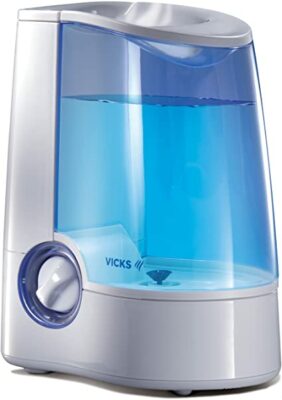
Cool Mist

Pros
Warm Mist
The warm mist helps keep a room warm
Helps reduce bacteria and germs in the air
Less likely to build up bacteria within the machine
Cool Mist
Can be used all year round
Lower on energy consumption
Safe for small children and animals
Cons
Warm Mist
Higher energy consumption
The heating element is a hazard for small children and animals
Cool Mist
More prone to build up bacteria in the machine
Cool mist in a slightly humid room can cause a tight chest and an infection
Best For
Warm Mist
People with allergies and asthma
Cool Mist
Babies and small children
What is a Warm Mist Humidifier and How Does a Warm Mist Humidifier Work?
A warm mist humidifier is an electronic appliance that releases warm mist to increase a room’s humidity. It has a heating element that helps heat the steam that it releases to clear up your child’s dry cough, especially during the cold winter months. The warm mist warms up a room.
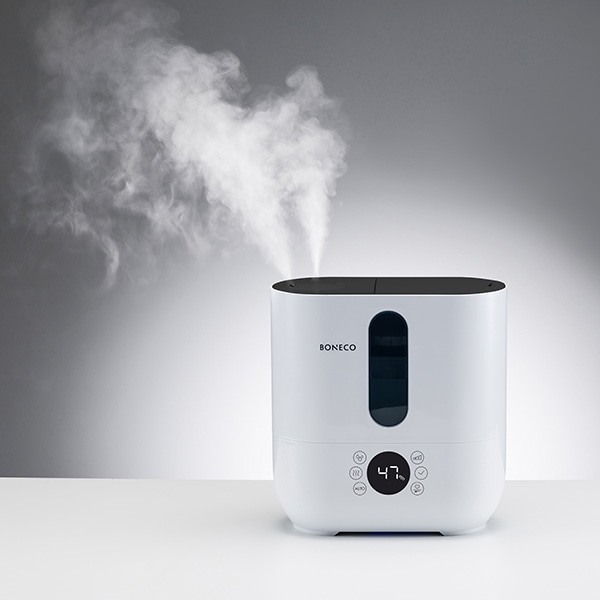
The warm mist helps reduce the bacteria and germs, creating a higher level of moisture saturation in your child’s bedroom. Adding pure, clean water to the humidifier ensures that it gives off the clean mist. You can add medication or oils to alleviate the tightness and dryness in a bad chest.
Warm mist humidifiers don’t have fans; therefore, they are quieter when allowing anyone who is noise sensitive to have a more peaceful sleep. Due to the heating element, the humidifier shouldn’t be used or placed in reach of a child or family pet as it can be dangerous.
The heating element has a higher energy consumption than the cool mist humidifier.
What is a Cool Mist Humidifier, and How Does a Cool Mist Humidifier Work?
Like the warm mist humidifier, a cool-mist humidifier is an electronic appliance that releases steam. It doesn’t consist of a heating element, so it’s safer for children and family pets. Pouring purified water into the machine gives off a cool mist to create more moisture in the room.
If you are batting with a tight chest and a dry cough, a cool-mist humidifier making moisture allows you to breathe a bit easier and relax. Clean out the water tank daily, and dry the machine thoroughly to reduce bacteria build-up.
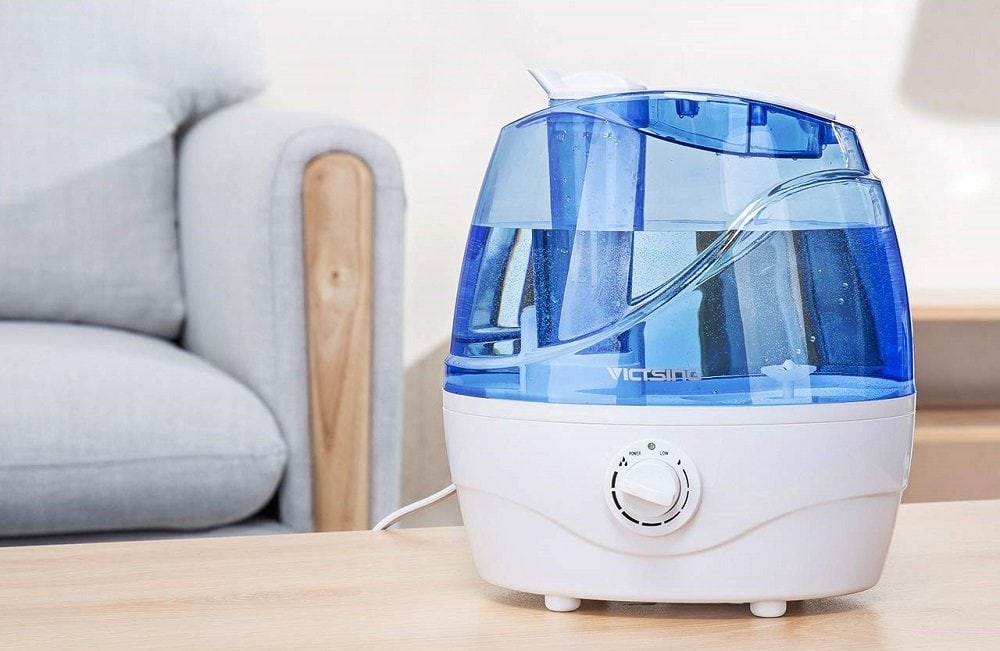
The cool mist humidifier has a fan that can be a little bit noisier if you are a light sleeper and can’t sleep with background noise. It can be used all year round and is more energy-efficient than warm mist humidifiers.
Cool mist humidifiers, evaporative humidifiers, and ultrasonic humidifiers all release cool mist. These are all effective machines and have the same results.
Relevant Characteristics Between Warm and Cool Mist Humidifiers
Warm Mist vs Cool Mist
Compare by tapping or clicking below!

Humidity Level
Warm Mist Humidifier
The humidity level goes up 40- 60%
Cool Mist Humidifier
40-60% up
Water Capacity
Warm Mist Humidifier
Water tank takes up to 1 Gallon
Cool Mist Humidifier
2.2 liters
Coverage Area
Warm Mist Humidifier
Covers 500 square feet for the most effectively
Cool Mist Humidifier
Covers 300 square feet for the most effectivity
Noise
Warm Mist Humidifier
Emits whisper-quiet sounds
Cool Mist Humidifier
28dB Whisper quiet
Cost and Efficiency
Warm Mist Humidifier
$20- $40
Cool Mist Humidifier
$30-$40
Maintenance
Warm Mist Humidifier
Low maintenance with no filter
Cool Mist Humidifier
Easy to clean and refill
Similarities and Differences
These humidifiers have many, similar functions. We’ll explain the differences and similarities to help you choose the right one for you.
Warm and Cool Mist Humidifier Differences
The following are differences between the warm mist humidifier and the cool mist one.
Warm Mist
Heating Element
The warm mist humidifier has a heating element that heats the water released as mist. The warm mist that it releases helps heat a small room in those winter months.
Warm mist is more effective in reducing bacteria and germs in the room, which prevents you from getting sick. The heating element has higher energy consumption.
Noise
The humidifier doesn’t have a fan, so it’s as quiet as a whisper.
Safety
Using the warm mist humidifier will need to be used with caution as the steam can burn you if you are not careful. Should you have pets or children, the heating element could be problematic.
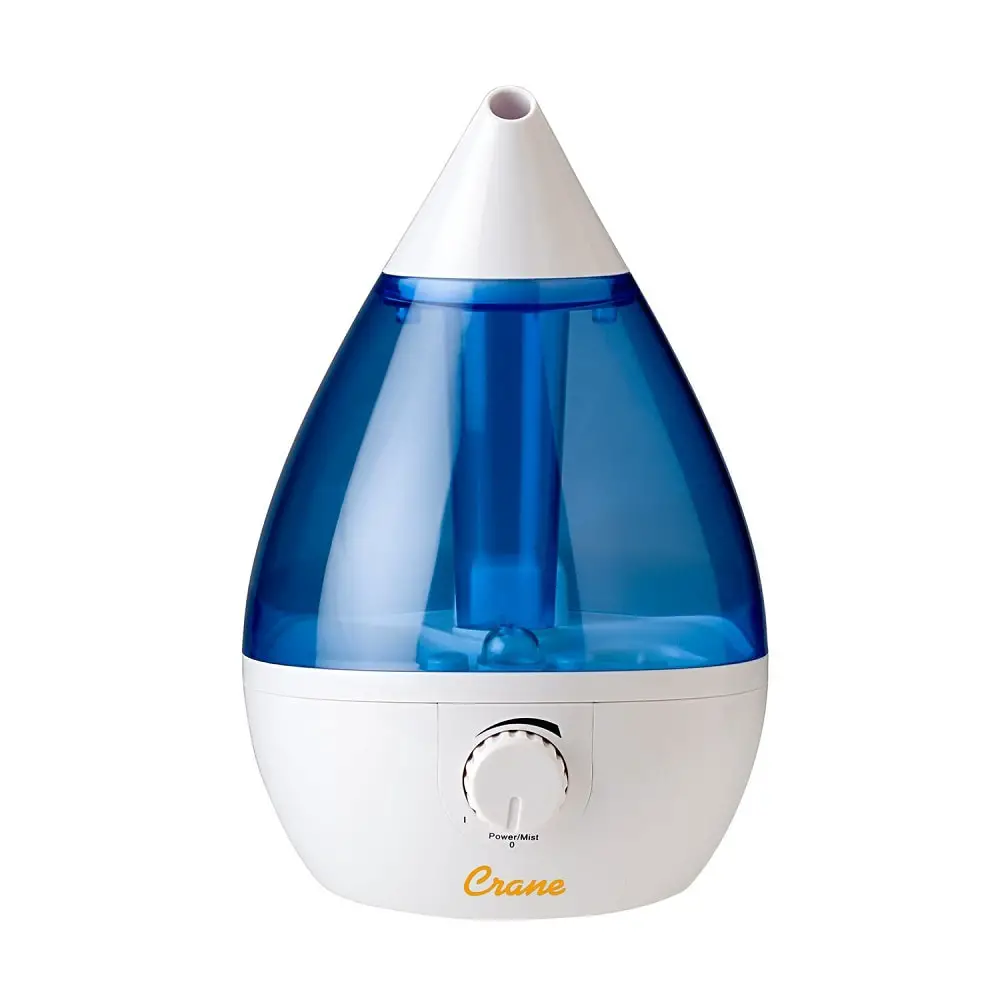
Cool Mist
Fan
The cool mist humidifier has a fan instead of a heating element, which creates a cool mist. The energy consumption is much lower using the fan. Cool mist is less effective in reducing bacteria and germs in the air.
A cool-mist humidifier is used all year round; however, caution is to be taken in a baby’s nursery during the cold winter months as the cool mist can be too cold on a baby.
Noise
As most fans rotate, they tend to be noisier. If you are a light sleeper and can’t sleep with noise, the gentle swooshing sound might be a problem. Some people find it to be as soft as a whisper, others may find it therapeutic like white noise, and others may find it not so silent.
Safety
The cool mist humidifier doesn’t have an element that could potentially burn a crawling investigative toddler or a clumsy pet that could bump the machine over.
Warm and Cool Mist Humidifier Similarities
The following are similarities between the Warm Mist humidifier and the cool mist one.
Warm Mist
Water
Using purified or distilled water is preferred when using the warm mist humidifier. When you use clean water, you are releasing clean, warm mist to inhale and heal. If you use regular water, you expose your humidifier to minerals that can cause crust in it. This way, your machine stays cleaner for a longer time.
Vapor
You can use medical oils or vapor in each machine to help open a chest with mucus. The warm mist helps with an asthmatic attack as well, provided it isn’t a trigger that can cause one.
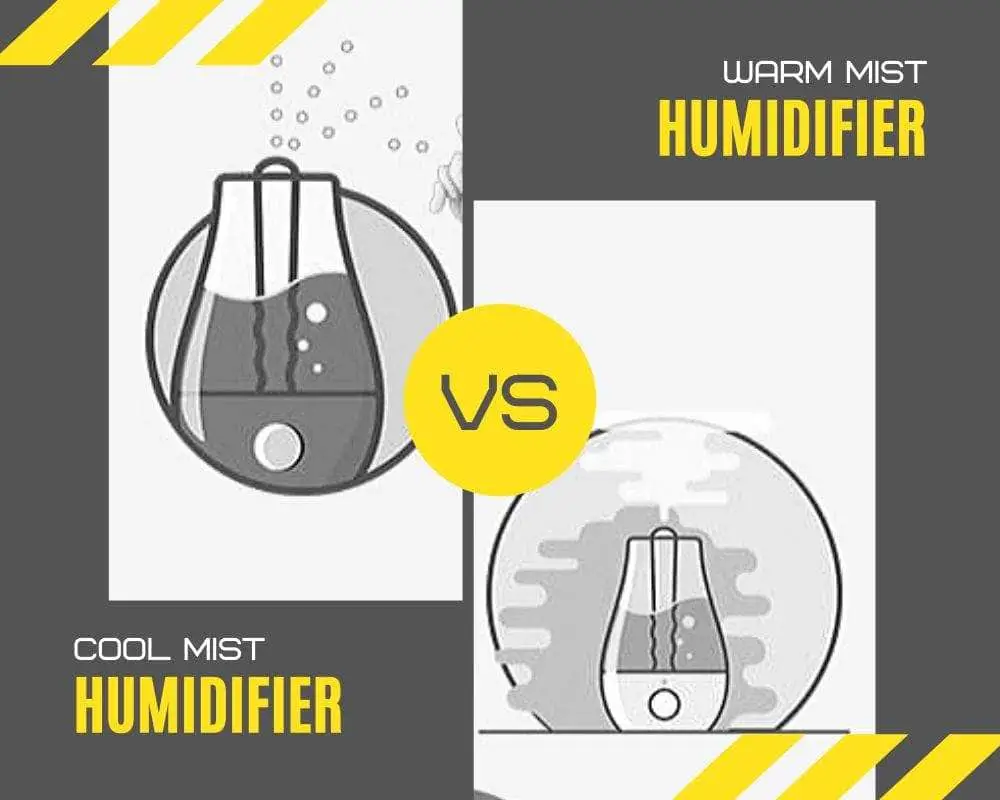
Area Covered
The warm mist humidifier covers an area of up to 500 square feet effectively. The smaller the area, the more humidity it puts back into space in a shorter period.
Cool Mist
Water
Using purified or distilled water is also preferred when using the cool mist humidifier. When you use clean water, you are releasing clean, cool mist to inhale and heal; if you use regular tap water, you expose your humidifier to minerals that can cause debris in your humidifier.
Vapor
You can use medical oils or vapor in each machine to help open a tight chest. The cool mist can calm an asthmatic attack, provided the mist is not a trigger. It helps put enough moisture in the air in the room to allow you to feel like you are getting clean air to your lungs.
Area Covered
The cool mist humidifier also covers an area of up to 500 square feet.
Benefits of Warm vs Cool Mist Humidifiers
The benefit of warm mist humidifiers is that they clear the air of bacteria and germs. They’re safer for a household with crawling toddlers and pets.
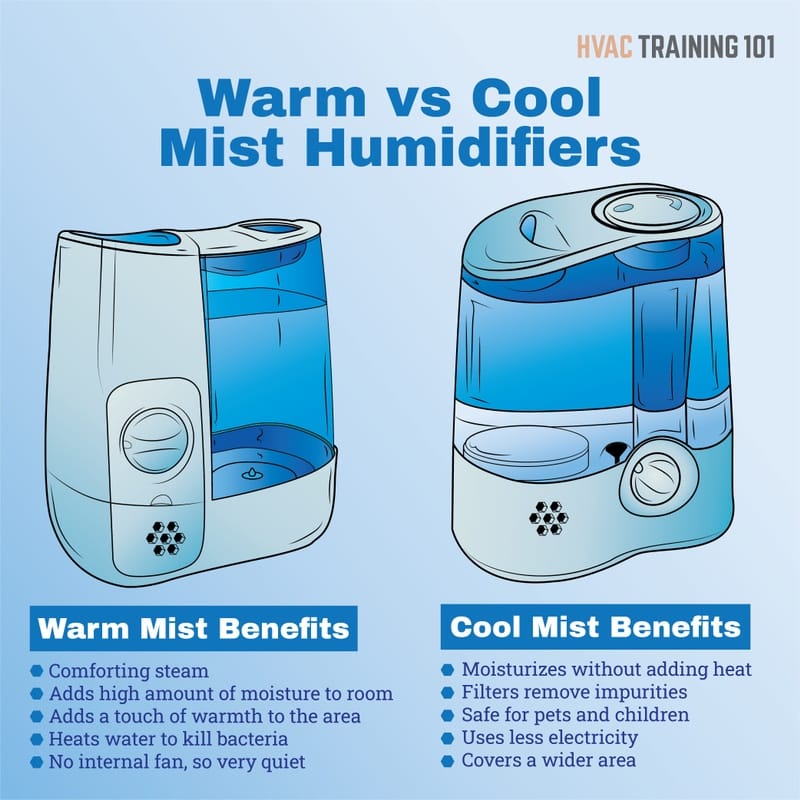
What is a Warm Mist Humidifier Good For?
A warm mist humidifier is good for numerous things such as:
Irritated Sinus Passages, Bleeding Noses, and Sore Throats
When the air is dry and filled with bacteria, these often cause infections or aggravated nasal cavities or throats. When your nasal passages are dry, this causes the blood vessels to rupture; keeping them moist with a humid and clean room helps prevent this.
Itchy Skin and Cracked Lips
Sleeping in a dry room can cause your skin and lips to dry, too. Ensuring the air is healthy and humid keeps your skin and lips moist and smooth.
Respiratory Ailments
If you have asthma, allergies, a cold, or the flu, and your chest has been affected, the warm mist helps alleviate the aggravation in the air and your respiratory airways. Know what triggers your asthma and allergies to ensure that the warm moisture does not affect your chest more. The warm mist that is released helps soothe the chest’s tightness and relieves the mucus or allergic triggers in the airway.
Risks of Warm Mist Humidifiers
The most significant hazard of using the warm mist humidifier is that it can burn small children or pets who pull the chord or try touching the mist. The heating element is dangerous if the unit falls on top of a child.
There is no safety feature or temperature setting for the heat of the warm mist released. If the machine is not cleaned daily and thoroughly, bacteria can build up in it.
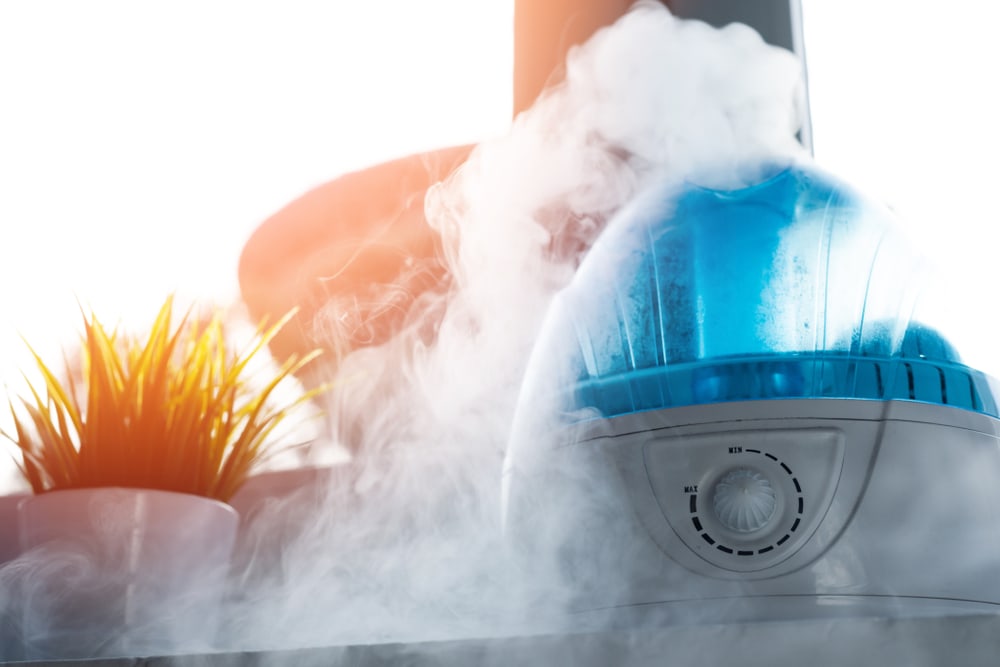
Who Should NOT Use a Cool Mist Humidifier?
If you are asthmatic and highly allergic, using a cool-mist humidifier can be more harmful than good. Should you battle with eczema or any skin allergies, the cool mist can make your condition worse.
If the air is already damp, the cool moisture can cause upper respiratory conditions that can turn into infections. These issues may take longer to heal, especially in newborns and the elderly.
What About Ultrasonic Humidifiers?
Ultrasonic humidifiers are like evaporative humidifiers; they serve the same purpose of putting moisture into the air. The ultrasonic humidifier does this with vibrations created by two ceramic plates known as high-frequency sound vibrations.
This is a safer option for children as this humidifier does not have a heating element, so that hazard is not a problem. However, the lack of heat leaves room for bacteria to grow. Cleaning this machine becomes a huge priority to prevent the spread of bacteria.
The evaporative humidifiers have been around for many years and have a fundamental way of working. The humidifier uses a fan to speed up the evaporation process in the room. With the evaporation humidifiers, filters trap the mineral scale. It reduces the risk of fine dust in the room. The machine’s noise levels differ from design to design.
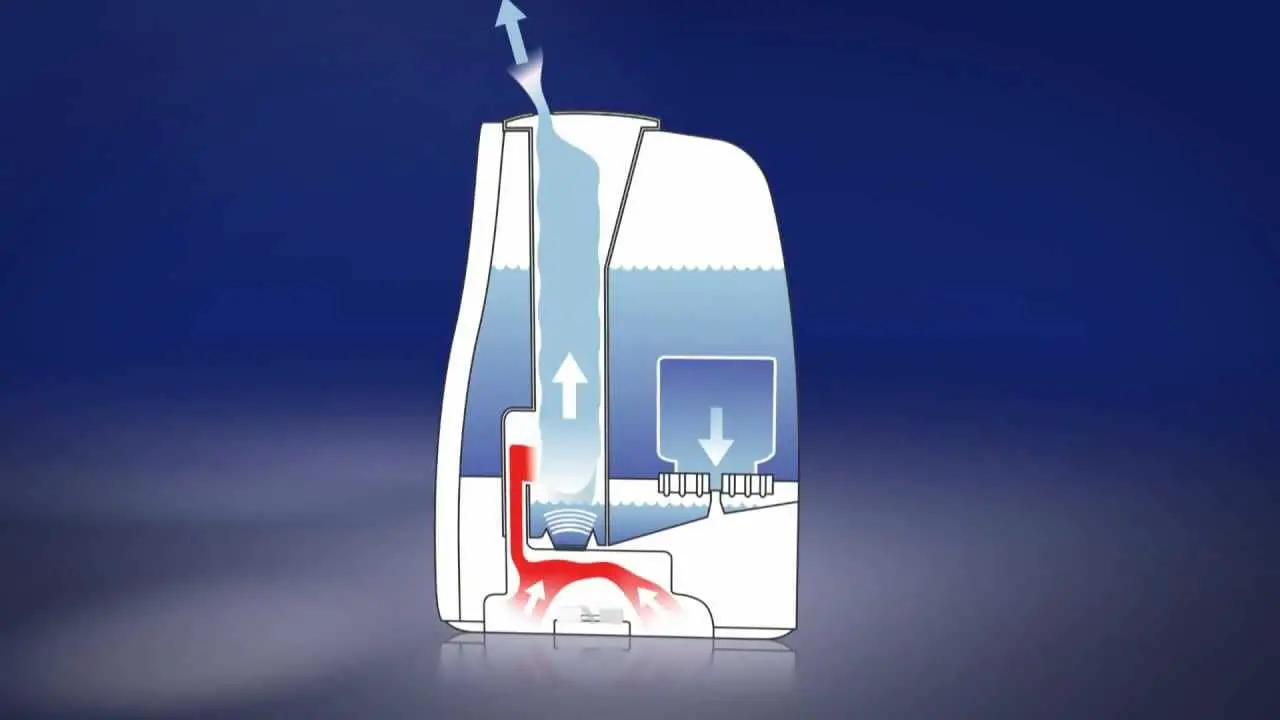
Bottom Line
When deciding to invest in a humidifier, consider why you want one. Where do you live? Do you have asthma, eczema, or allergies that you need to take into consideration? If you have small children or animals, the cool mist humidifier may be the best option.
If you are more prone to eczema and live in a colder town, the warm mist humidifier would be a better option; the warm mist won’t dry out your skin. Whatever you choose, they will put moisture back into the room.
People Also Ask
Here are some questions that are very important to note when searching for the right humidifier. No question is silly when it concerns your health or the safety of your family.
The cool mist humidifier does not affect the room’s overall temperature. It makes it feel fresher and cooler, especially in the winter months when the heating is on in the house, thus causing the air to be drier.
A cool mist ultrasonic humidifier is best for your indoor plants. The cool mist helps keep your plants thriving with the mist’s superfine droplets. Merely watering your plants is not enough; they need humidity to oxygenate.
Studies have found that a cool-mist evaporative humidifier would be best to ward off the coronavirus. The evaporated technology uses a replaceable wicking filter to put moisture back into the air. This ensures the air is never over humidified and stays at the 40-60% humidity level.
Yes. Warm mist humidifiers use hot water that’s boiled within the machine. The steam released kills off most of the germs and bacteria in the air.
Is a Warm or Cool Mist Humidifier Better for Sinuses?
Cool mist humidifiers are better for sinuses and congestion. When you sleep with the humidifier, it allows your room to be humid. As you breathe, it loosens the mucus in your nasal passages. This makes it easier to breathe and get a good night’s rest.
Are Warm Mist Humidifiers Safe for Babies?
Warm mist humidifiers are safe to put on for the night in your babies’ rooms if their little chests or noses need some opening up. However, as babies get bigger and become more mobile, they are at considerable risk of burning themselves on the vapor released or with the hot water.
